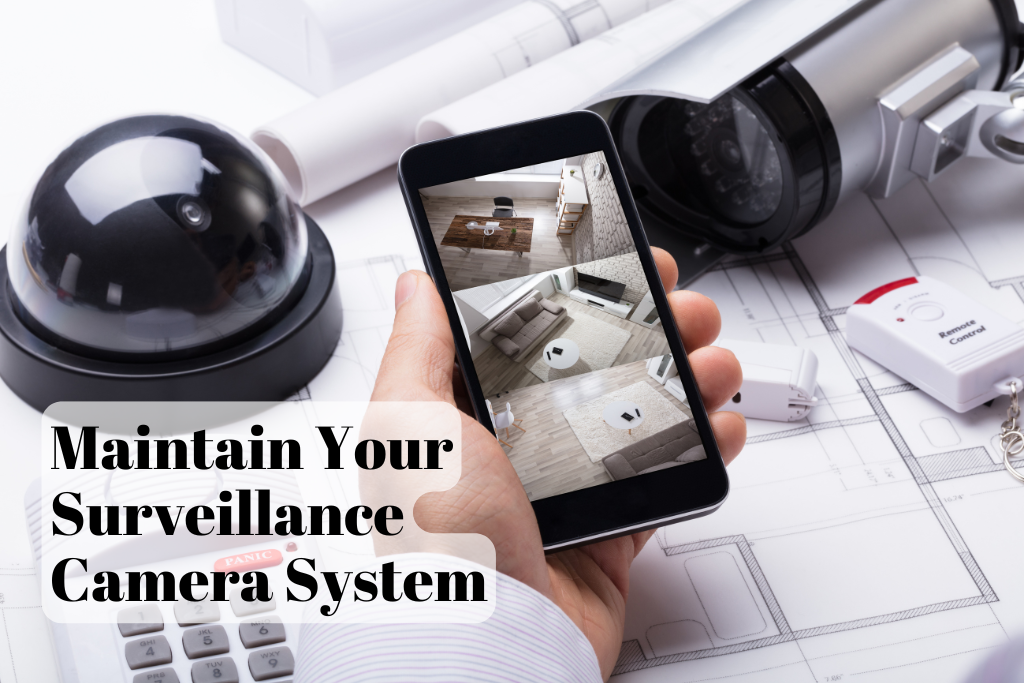Introduction
Surveillance cameras play a crucial role in ensuring the security of homes, businesses, and public spaces. However, like any other technology, they require regular maintenance to function at their best. Without proper care, even the most advanced security cameras can develop issues that compromise their effectiveness. In this guide, we will cover essential steps for maintaining your surveillance camera system to ensure it continues to provide clear images, reliable monitoring, and extended longevity.
Why Maintenance is Important?
Before diving into the steps, it's important to understand why surveillance camera maintenance is vital. Over time, cameras are exposed to various environmental elements like dust, moisture, and temperature fluctuations, which can affect their performance. Additionally, software updates, wiring, and the physical condition of the cameras need attention. Regular maintenance from trusted experts like Spokane Secure Solutions helps::
- Ensure clear video quality.
- Prevent technical issues.
- Prolong the lifespan of your system.
- Maximize the security of your property.
Steps for Maintaining Your Surveillance Cameras
- Regular Cleaning
- Lens Cleaning: The lens is one of the most critical parts of any surveillance camera. Clean it regularly to remove dirt, smudges, and debris. Use a microfiber cloth and a gentle lens cleaner to avoid scratches.
- Housing and Mounts: Dust, bird droppings, or cobwebs can accumulate on the camera housing and obstruct the view. Wipe down the exterior and ensure the mounting is secure.
- Inspect Cables and Connections
- Check for Wear and Tear: Regularly inspect the cables for any signs of damage. If you notice fraying or corrosion, replace them immediately.
- Connection Testing: Ensure all connections between cameras, power supplies, and storage devices are secure. Loose or corroded connections can result in poor video quality or intermittent signal loss.
- Test Camera Functionality
- Check Video Feed: Periodically test the video feed for all cameras to ensure they are capturing footage clearly and in real time. Look for any distortions, delays, or dead pixels in the video stream.
- Night Vision Test: If your cameras have infrared (IR) night vision, test them in low-light conditions to confirm that the IR lights are functioning and providing adequate visibility.
- Software Updates
- Firmware Updates: Surveillance cameras often have firmware updates that improve performance or fix security vulnerabilities. Keep your camera’s software up to date to ensure optimal operation.
- Monitor Software Compatibility: If you are using a security system with network video recorders (NVRs) or digital video recorders (DVRs), ensure their software is also updated to avoid potential compatibility issues.
- Check Recording and Storage
- Storage Space Monitoring: Surveillance systems that record video footage need sufficient storage space. Check your system’s storage capacity regularly to avoid running out of space and missing important recordings. Similarly, when it comes to safety, ensuring you have the right systems in place is crucial. A Comprehensive Guide to Fire Safety Equipment Installation Services can help you understand the importance of properly installed fire safety systems that can protect your business and property, just like surveillance systems protect your footage..
- Backups and Cloud Storage: If your system allows, set up automatic backups to the cloud or external drives to ensure you don’t lose valuable footage.
- Weatherproofing and Environmental Factors
- Outdoor Camera Maintenance: Cameras installed outside are subject to harsh weather conditions. Inspect the weatherproofing of outdoor cameras to ensure they are not damaged by rain, snow, or extreme heat.
- Adjust Camera Placement: Over time, wind, storms, or even intentional tampering may shift the camera’s angle. Regularly adjust your cameras to ensure they are still capturing the desired area.
- Test Security Features
- Motion Detection Sensitivity: If your cameras have motion detection, test this feature regularly. Ensure the sensitivity is adjusted appropriately to avoid false alerts or missed activities.
- Notifications and Alerts: Test the system's notification features to ensure you receive alerts promptly on your smartphone or monitoring device when movement is detected.
Common Issues to Watch Out For
- Blurry or Distorted Images: This may be due to a dirty lens, incorrect focus, or damage to the camera.
- Intermittent Video Feed: This can result from weak power connections, network issues, or outdated software.
- No Recording: If the camera isn’t recording, check the storage device, software settings, and recording schedules.
Conclusion
Regular maintenance of your surveillance camera system is essential to keep your security setup functioning smoothly. By following the steps outlined in this guide, you can prevent minor issues from escalating into costly repairs and ensure that your system provides the protection you need. Whether for home or business, a well-maintained surveillance system is your first line of defense against potential threats.





Comments